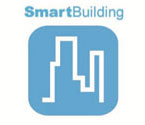WHAT WE DO
R&S&I SERVICES and CONSULTANCY
Healthy Architecture & City is a labile, agile, flexible and permeable team that participates in and fluidly executes projects, services, consultancy, and R&D&I programmes for companies and institutions such as the state, autonomous and local administration, and citizens and groups with specific needs. Their collaboration with our research group allows these bodies and companies to optimise their processes and meet their needs in very specialised services of high added value, making us their external R&D&I department with the solvency that affiliation with an institution of international prestige such as the University of Seville brings.
The services and consultancies that the Healthy Architecture & City (HAC) group offers to public institutions and companies incorporate the use of the following advanced technological tools:

Various advanced technologies converge in today’s design and construction of buildings and cities, including Artificial Intelligence (AI), Building Information Modelling (BIM), Digital Terrain Modelling (MDT), Computer Aided Design (CAD) and Geographic Information Systems (GIS). Each of these technologies plays a fundamental role in different stages of the project, from the initial design to its materialisation in the final building.
1. Artificial Intelligence (AI): AI can be crucial in optimising the location and design of buildings and urban spaces, taking into account factors such as the topography of the land, the most densely populated areas, urban voids, the environment, etc. In addition, AI can help in the early detection of problems and failures by analysing patterns in the data collected by the sensors.
2. Building Information Modelling (BIM): BIM allows the creation of 3D digital models of buildings, constructions, facilities, and infrastructure that can be used for visualisation, simulation, and cost analysis. BIM models can include not only buildings but also other related components. In this phase, BIM models can be used to visualise and track the status of building development.
3. Digital Terrain Modelling (DTM): The DTM provides an accurate representation of the existing terrain, which is crucial for the design of urban implantation operations. The MDT data can be used to identify the most efficient locations, minimising costs.
4. Computer-Aided Design (CAD): CAD is an essential tool for creating architectural drawings. This tool allows architects and engineers to draw plans in 2D and visualise the network in 3D, which can help identify and resolve design issues at an early stage.
5. Geographic Information Systems (GIS): GIS can provide a wide range of georeferenced data that can inform the design or planning of cities or any infrastructure and implementation, such as the location of populated areas, terrain features, and land use patterns. GIS can also be used to analyse and manage network data during the operation and maintenance phases.
The use of protocolized models that allow these technologies is essential to ensure the flow of information through all stages of the project. These models establish the rules and procedures for data management and ensure that relevant information is available to all interested parties at the right time.
Our services cover three levels: Smart House, or domestic; Smart Building, or building construction and Smart City, or urban. You can download detailed catalogues using the links at the bottom of this section.
R&D&I SERVICES
Download general catalogue
Subject Index Codes (SIC):
1.2.15 Gestión de Conocimiento, Gestión de Procesos; 1.2.18 Interfaces de usuario, Usabilidad; 1.2.20 Software de Automatización de Edificios; 1.2.21 Control Remoto; 1.2.22 Aplicaciones Inteligentes; 1.3.1 Aplicaciones para Sanidad; 1.3.6 Sistemas de Gestión Medioambiental y Sistemas de Gestión Documental; 1.3.7 GIS Sistemas de Información Geográfica; 1.3.9 Sistema de Gestión de Calidad; 1.3.10 Sistema de Gestión del Mantenimiento; 1.4.1 Herencia Cultural; 1.4.6 Visualización, Realidad Virtual; 1.5.3 Comunicaciones Móviles; 2.1. Diseño y Modelado / Prototipos; 2.6 Tecnología de la Construcción; 2.7 Tecnología de Materiales; 10 Protección del hombre y del medioambiente.
Venture Economics Industry Codes (VEIC):
2.6.3 Servicios de formación; 2.6.4 Servicios de introducción, proceso y análisis de datos; 5.2.1 Servicios terapéuticos; 7.4.3 Hogar y Muebles; 8.2.1 Gestión energética. Incluye Eficiencia Energética; 8.2.2 Equipos industriales de medida y sensores; 8.2.3 Sistemas y equipos para control de procesos; 8.2.5 Sistemas y software de visión artificial; 9.3.5 Servicios de Consultoría; 9.3.5.4-CV Servicios de Consultoría del sector Bio-Salud; 9.3.5.6-CV Servicios de Consultoría del sector TIC; 9.3.5.9-CV Promoción innovación, Transf. Tecnológica y otros; 9.3.7.1-CV Asuntos/Servicios Sociales; 9.7.5 Servicios para la construcción; 9.7.5.1-CV Conservación del Patrimonio arquitectónico; 9.7.5.2-CV Domótica.




